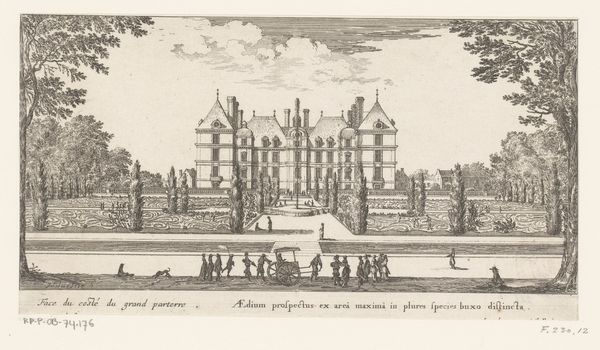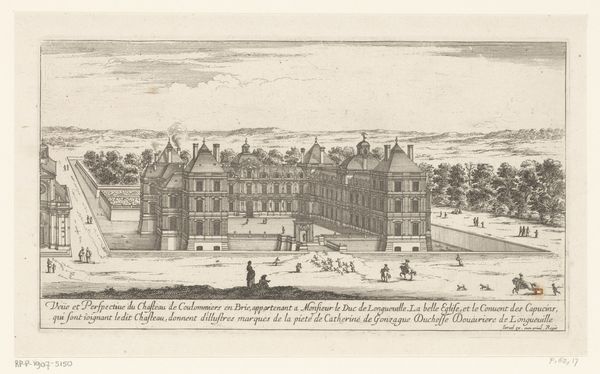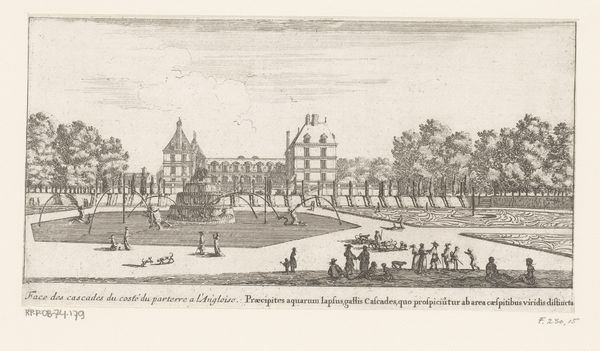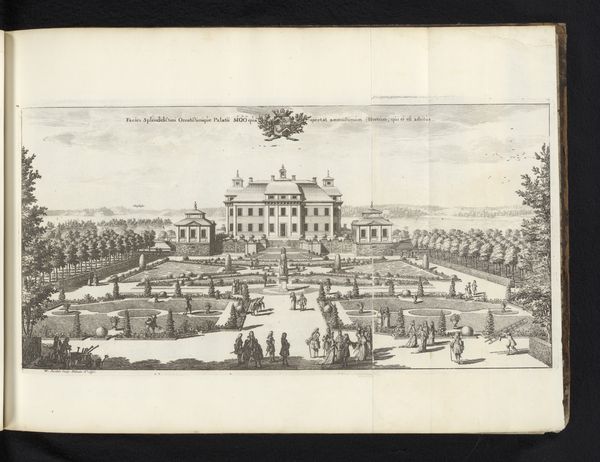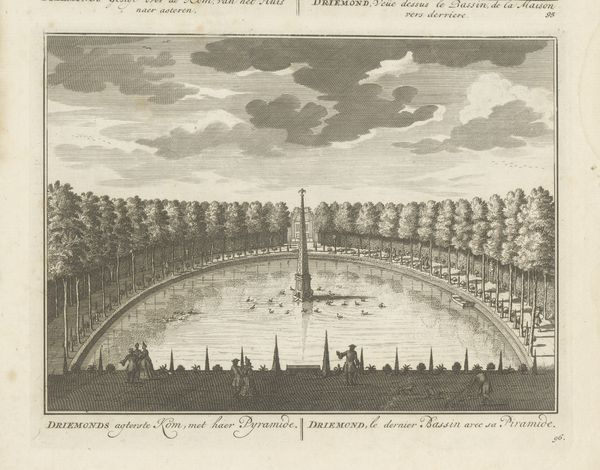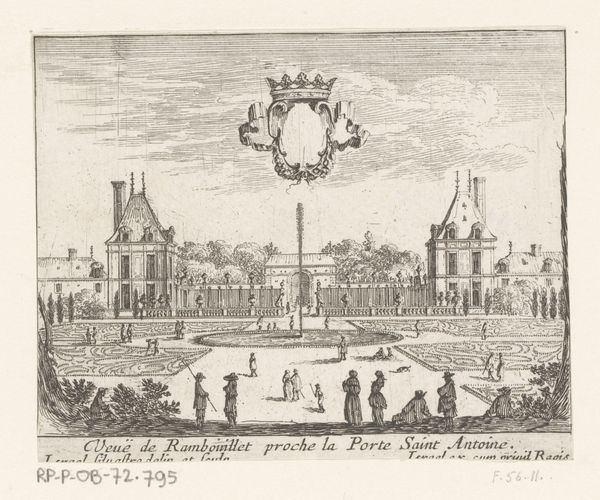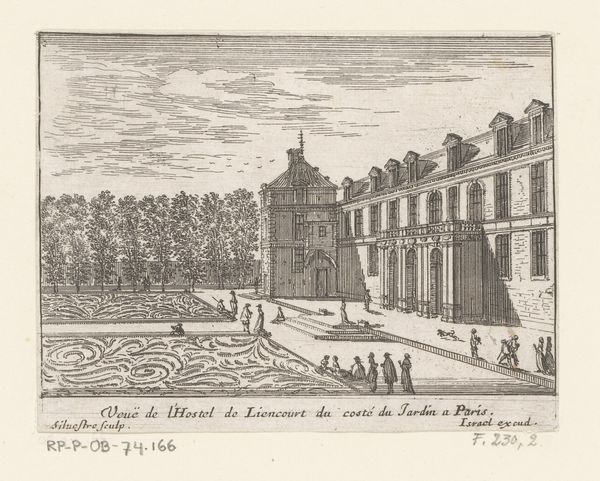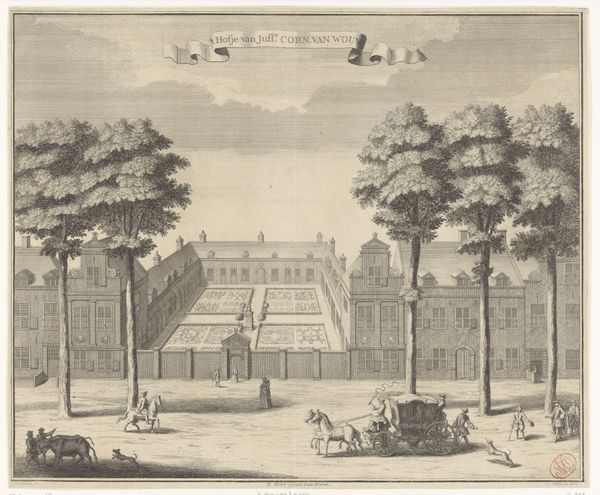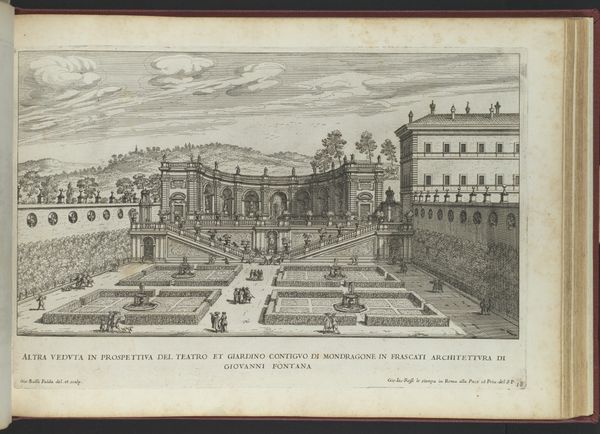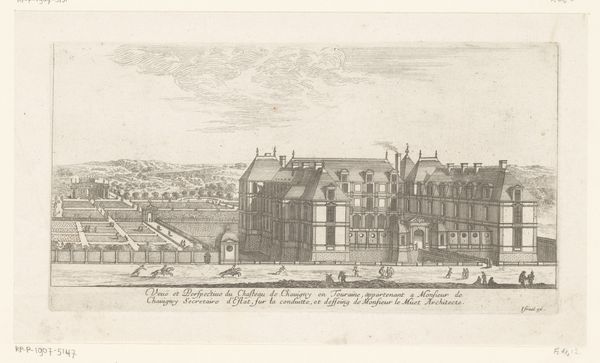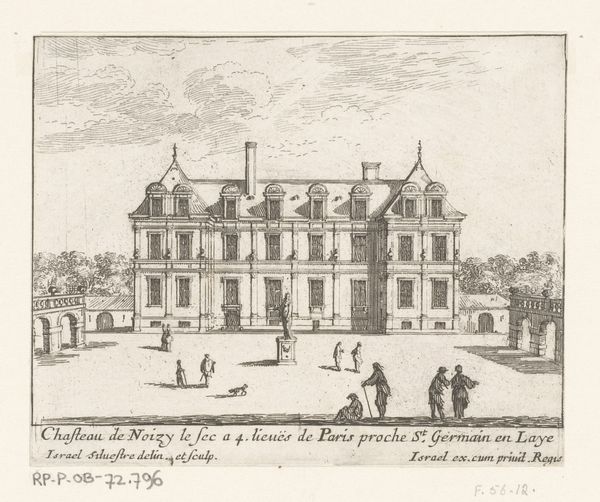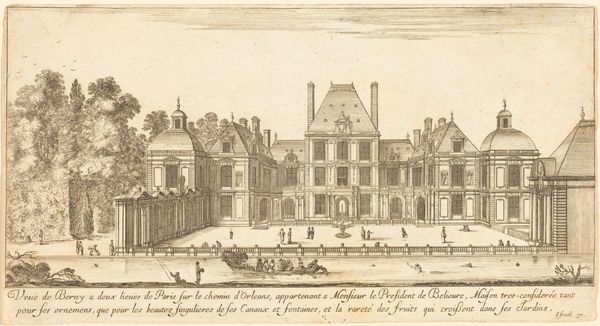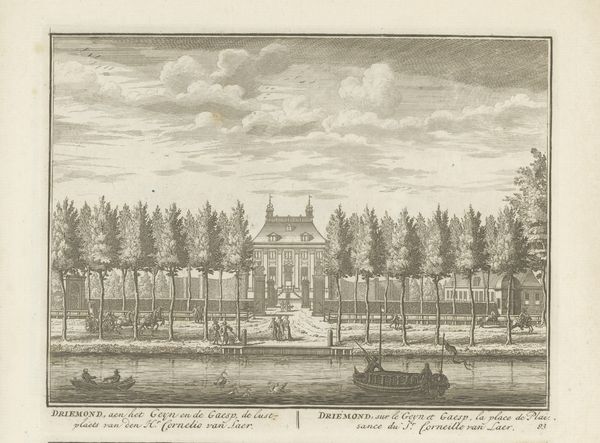
print, engraving
#
baroque
# print
#
landscape
#
cityscape
#
engraving
Dimensions: height 130 mm, width 247 mm
Copyright: Rijks Museum: Open Domain
This print, depicting the Chateau de Brèves, was made by Jean Marot around the mid-17th century using an engraving process. This was a method that demanded precision and skill, relying on the engraver's ability to translate a three-dimensional scene onto a flat copper plate using only lines. The process begins with the artist using a tool called a burin to carve lines directly into the metal. The plate is then inked, and the surface wiped clean, leaving ink only in the carved lines. When paper is pressed against the plate, the image is transferred. The final print is a direct result of the engraver’s hand, making the repetitive lines a kind of physical record of labor. Prints like these played a crucial role in circulating images of power and prestige during the early modern period. They were relatively inexpensive to produce, offering a wider audience a glimpse into the lifestyles of the wealthy. In this way, the print medium itself blurred the lines between art, craft, and commerce, reflecting broader shifts in labor, politics, and consumption.
Comments
No comments
Be the first to comment and join the conversation on the ultimate creative platform.
